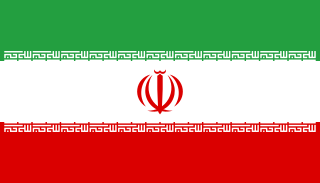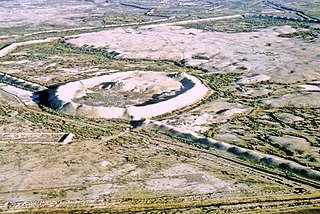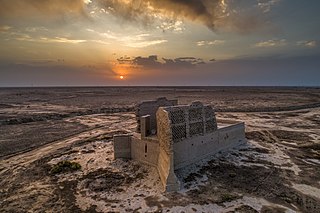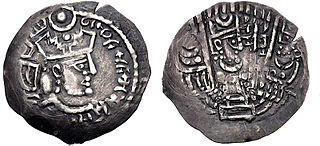 W
WAfghanistan, officially the Islamic Republic of Afghanistan, is a landlocked country at the crossroads of Central and South Asia. Afghanistan is bordered by Pakistan to the east and south; Iran to the west; Turkmenistan, Uzbekistan, and Tajikistan to the north; and China to the northeast. Occupying 652,000 square kilometers (252,000 sq mi), it is a mountainous country with plains in the north and southwest. Kabul is the capital and largest city. The population is around 32 million, composed mostly of ethnic Pashtuns, Tajiks, Hazaras, and Uzbeks.
 W
WAlania was a medieval kingdom of the Iranian Alans (proto-Ossetians) that flourished in the Northern Caucasus, roughly in the location of latter-day Circassia and modern North Ossetia–Alania, from its independence from the Khazars in the late 9th century until its destruction by the Mongol invasion in 1238–39. Its capital was Maghas, and it controlled a vital trade route through the Darial Pass. The kingdom reached its peak in the 11th century, under the rule of king Durgulel.
 W
WBactria, or Bactriana, was an ancient region in Central Asia. Bactria proper was north of the Hindu Kush mountain range and south of the Amu Darya river, covering the flat region that straddles modern-day Afghanistan. More broadly Bactria was the area north of the Hindu Kush, west of the Pamirs and south of the Tian Shan, covering modern-day Tajikistan and Uzbekistan as well, with the Amu Darya flowing west through the centre.
 W
WBalochistan is an arid desert and mountainous region in South and Western Asia. It comprises the Pakistani province of Balochistan, the Iranian province of Sistan and Baluchestan, and the southern areas of Afghanistan, including Nimruz, Helmand and Kandahar provinces. Balochistan borders the Pashtunistan region to the north, Sindh and Punjab to the east, and Persian regions to the west. South of its southern coastline, including the Makran Coast, are the Arabian Sea and the Gulf of Oman.
 W
WDrangiana or Zarangiana (Greek: Δραγγιανή, Drangianē; also attested in Old Western Iranian as 𐏀𐎼𐎣, Zraka or Zranka, was a historical region and administrative division of the Achaemenid Empire. This region comprises territory around Hamun Lake, wetlands in endorheic Sistan Basin on the Iran-Afghan border, and its primary watershed Helmand river in what is nowadays southwestern region of Afghanistan.
 W
WFars Province, also known as Pars as well as Persis and Persia, is one of the thirty-one provinces of Iran. With an area of 122,400 km², it is located in Iran's southwest, in Region 2, and its administrative center is Shiraz. As of 2011, Fars had a population of 4.6 million people, of which 67.6% were registered as urban dwellers (urban/suburbs), 32.1% villagers, and 0.3% nomad tribes.
 W
WHyrcania is a historical region composed of the land south-east of the Caspian Sea in modern-day Iran and Turkmenistan, bound in the south by the Alborz mountain range and the Kopet Dag in the east.
 W
WIndo-Scythians were a group of nomadic Iranian peoples of Saka and Scythian origin who migrated southward into western and northern South Asia from the middle of the 2nd century BC to the 4th century AD.
 W
WIran, also called Persia and officially the Islamic Republic of Iran, is a country in Western Asia. It is bordered to the northwest by Armenia and Azerbaijan, to the north by the Caspian Sea, to the northeast by Turkmenistan, to the east by Afghanistan, to the southeast by Pakistan, to the south by the Persian Gulf and the Gulf of Oman, and to the west by Turkey and Iraq. Iran covers an area of 1,648,195 km2 (636,372 sq mi), with a population of 83 million. It is the second largest country in the Middle East, and its capital and largest city is Tehran.
 W
WKangju was the Chinese name of an ancient kingdom in Central Asia which became for a couple of centuries the second greatest power in Transoxiana after the Yuezhi. Its people, the Kāng were an Indo-European semi-nomadic people probably identical to the Iranian Sogdians or other Iranian groups closely related to them, such as the Asii.
 W
WKhorāsān, sometimes called Greater Khorasan, is a historical region which formed the northeast province of Greater Iran. The name signifies "the Land of the Sun" or "the Eastern Province".
 W
WKhwarazm, or Chorasmia, is a large oasis region on the Amu Darya river delta in western Central Asia, bordered on the north by the (former) Aral Sea, on the east by the Kyzylkum Desert, on the south by the Karakum desert, and on the west by the Ustyurt Plateau. It was the center of the Iranian Khwarazmian civilization, and a series of kingdoms such as the Khwarazmian dynasty and the Afrighid dynasty, whose capitals were Kath, Gurganj and – from the 16th century on – Khiva. Today Khwarazm belongs partly to Uzbekistan and partly to Turkmenistan.
 W
WThe Kidarites, or Kidara Huns, were a dynasty that ruled Bactria and adjoining parts of Central Asia and South Asia in the 4th and 5th centuries. The Kidarites belonged to a complex of peoples known collectively in India as the Huna, and in Europe as the Chionites, and may even be considered as identical to the Chionites. The 5th century Byzantine historian Priscus called them Kidarites Huns, or "Huns who are Kidarites". The Huna/ Xionite tribes are often linked, albeit controversially, to the Huns who invaded Eastern Europe during a similar period. They are entirely different from the Hephthalites, who replaced them about a century later.
 W
WThe Kingdom of Khotan was an ancient Iranian Saka Buddhist kingdom located on the branch of the Silk Road that ran along the southern edge of the Taklamakan Desert in the Tarim Basin. The ancient capital was originally sited to the west of modern-day Hotan at Yotkan. From the Han dynasty until at least the Tang dynasty it was known in Chinese as Yutian. This largely Buddhist kingdom existed for over a thousand years until it was conquered by the Muslim Kara-Khanid Khanate in 1006, during the Islamicisation and Turkicisation of Xinjiang.
 W
WKurdistan is a roughly defined geo-cultural territory in Western Asia wherein the Kurdish people form a prominent majority population and the Kurdish culture, languages, and national identity have historically been based. Geographically, Kurdistan roughly encompasses the northwestern Zagros and the eastern Taurus mountain ranges.
 W
WMargiana is a historical region centred on the oasis of Merv and was a minor satrapy within the Achaemenid satrapy of Bactria, and a province within its successors, the Seleucid, Parthian and Sasanian empires.
 W
WMedia is a region of north-western Iran, best known for having been the political and cultural base of the Medes. During the Achaemenid period, it comprised present-day Azarbaijan, Iranian Kurdistan and western Tabaristan. As a satrapy under Achaemenid rule, it would eventually encompass a wider region, stretching to southern Dagestan in the north. However, after the wars of Alexander the Great, the northern parts were separated due to the Partition of Babylon and became known as Atropatene, while the remaining region became known as Lesser Media.
 W
WMerv, formerly known as Alexandria and Antiochia in Margiana was a major city in Central Asia, on the historical Silk Road, located near today's Mary in Turkmenistan. Several cities have existed on this site, which is significant for the interchange of culture and politics at a site of major strategic value.
 W
WOsrušana or Ustrushana was a former Iranian region in Transoxiana. Oshrusana lay to the south of the great, southernmost bend of the Syr Darya and extended roughly from Samarkand to Khujand. The capital city of Oshrusana was Bunjikat. The exact form of the Iranian name Osrušana is not clear from the sources, but the forms given in Hudud al-'alam, indicate an original *Sorušna.
 W
WOssetia is an ethnolinguistic region located on both sides of the Greater Caucasus Mountains, largely inhabited by the Ossetians. The Ossetian language is part of the Eastern Iranian branch of the family of Indo-European languages. Most countries recognize the Ossetian-speaking area south of the main Caucasus ridge as lying within the borders of Georgia, but it has come under the control of the de facto government of the Russian-backed Republic of South Ossetia. The northern portion of the region consists of the republic of North Ossetia–Alania within the Russian Federation.
 W
WParthia is a historical region located in north-eastern Iran. It was conquered and subjugated by the empire of the Medes during the 7th century BC, was incorporated into the subsequent Achaemenid Empire under Cyrus the Great in the 6th century BC, and formed part of the Hellenistic Seleucid Empire following the 4th-century-BC conquests of Alexander the Great. The region later served as the political and cultural base of the Eastern-Iranian Parni people and Arsacid dynasty, rulers of the Parthian Empire. The Sasanian Empire, the last state of pre-Islamic Iran, also held the region and maintained the Seven Parthian clans as part of their feudal aristocracy.
 W
WPashtūnistān is the geographic historical region inhabited by the indigenous Pashtun people of modern-day Afghanistan and Pakistan in South-Central Asia, wherein Pashtun culture, language, and national identity have been based. Alternative names historically used for the region include "Pashtūnkhwā" (پښتونخوا) and "Afghānistān" (افغانستان), since at least the 3rd century CE onward. Pashtunistan borders Iran to the west, Persian and Turkic-speaking areas of Turkestan region to the north, Kashmir to the northeast, Punjab to the east, and Balochistan to the south.
 W
WSakastan was a Sasanian province in Late Antiquity, that lay within the kust of Nemroz. The province bordered Kirman in the west, Spahan in the north west, Kushanshahr in the north east, and Turan in the south east. The governor of the province held the title of marzban. The governor also held the title of "Sakanshah" until the title was abolished in ca. 459/60.
 W
WThe Sarmatians were a large Iranian confederation that existed in classical antiquity, flourishing from about the 5th century BC to the 4th century AD.
 W
WSistān, known in ancient times as Sakastān, is a historical and geographical region in present-day Eastern Iran and Southern Afghanistan. Largely desert, the region is bisected by the Helmand River, the largest river in Afghanistan, which empties into the Hamun Lake that forms part of the border between the two countries.
 W
WSogdia or Sogdiana was an ancient Iranian civilization that at different times included territory located in present-day Uzbekistan, Tajikistan, Kazakhstan, and Kyrgyzstan, such as Samarkand, Bukhara, Khujand, Panjikent, and Shahrisabz. Sogdiana was also a province of the Achaemenid Empire, and was the 18th province listed on the Behistun Inscription of Darius the Great. In the Avesta, Sogdiana is listed as the second best land that the supreme deity Ahura Mazda had created. It comes second, after Airyanem Vaejah, "homeland of the Aryans", in the Zoroastrian book of Vendidad, indicating the importance of this region from ancient times. Sogdiana was first conquered by Cyrus the Great, the founder of the Achaemenid Empire. The region would then be annexed by the Macedonian ruler Alexander the Great in 328 BC. The region would continue to change hands under the Seleucid Empire, Greco-Bactrian Kingdom, Kushan Empire, Hephthalite Empire, and Sasanian Empire.
 W
WThe Sogdian city-states refers to a number of independent or autonomous city-states in Iranian region of Sogdia in the late antiquity and medieval times. Most of the city-states were ruled by a king or queen, who was called "first among equals". However, the succession of rule was not stable, and the people could influence who would become the new ruler. The period, which experienced its peak in the 7th century, ended with the conquest of Transoxiana by the Islamic Caliphate.
 W
WTajikistan, officially the Republic of Tajikistan, is a landlocked country in Central Asia with an area of 143,100 km2 (55,300 sq mi) and an estimated population of 9,537,645 people. It is bordered by Afghanistan to the south, Uzbekistan to the west, Kyrgyzstan to the north and China to the east. The traditional homelands of the Tajik people include present-day Tajikistan as well as parts of Afghanistan and Uzbekistan.
 W
WTaxkorgan Tajik Autonomous County is a county of Kashgar Prefecture in Western Xinjiang, China. The county seat is the town of Tashkurgan.
 W
WTransoxiana is an ancient name referring to a region and civilization located in lower Central Asia roughly corresponding to modern-day eastern Uzbekistan, Tajikistan, southern Kazakhstan and southern Kyrgyzstan. Geographically, it is the region between the rivers Amu Darya to its south and the Syr Darya to its north.
 W
WYancai was the Chinese name of an ancient nomadic state centered near the Aral Sea during the Han dynasty period. They are generally considered to have been an Iranian people of the Sarmatian group. After becoming vassals of the Kangju in the 1st century BC, Yancai became known as Alanliao. Yancai is often connected to the Aorsi of Roman records, while Alanliao has been connected to the later Alans.